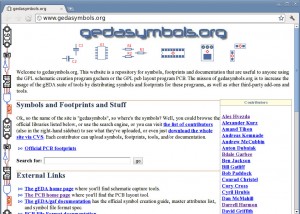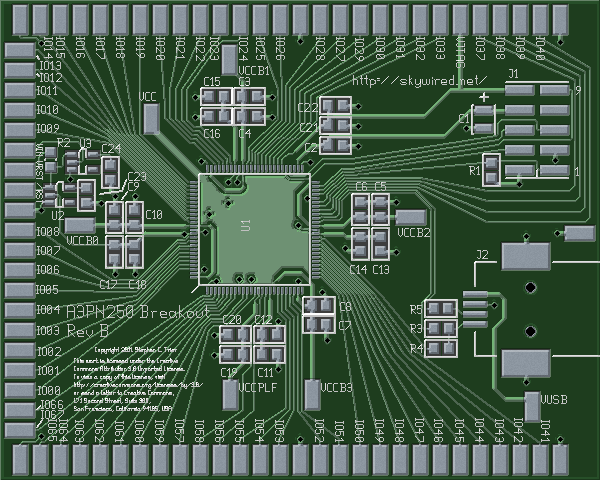 I’ve joined up as a contributor to gedasymbols.org. This great resource, run by DJ Delorie, hosts schematic symbols for gschem and footprints for gEDA’s layout software, PCB. A search engine helps locate symbols and footprints, and gedasymbols includes links to other libraries off-site, such as Dan Luciani’s extensive footprint library. Gedasymbols.org has been hugely useful every time I do a design in gschem or PCB, and I’m happy to have something I can contribute back.
I’ve joined up as a contributor to gedasymbols.org. This great resource, run by DJ Delorie, hosts schematic symbols for gschem and footprints for gEDA’s layout software, PCB. A search engine helps locate symbols and footprints, and gedasymbols includes links to other libraries off-site, such as Dan Luciani’s extensive footprint library. Gedasymbols.org has been hugely useful every time I do a design in gschem or PCB, and I’m happy to have something I can contribute back.
Gedasymbols has the symbols and footprints for the A3PN250 FPGA and AK5388 audio ADC breakout boards, plus symbols from an MSP430 project that I haven’t posted here yet.
As for other hacking recently, I’ve done parts placement for the AK5388 board but haven’t started routing it. I also need to make a better feedthrough panel for my antenna. I’ll have more to say about those two projects in a future post.
Comments welcome!



